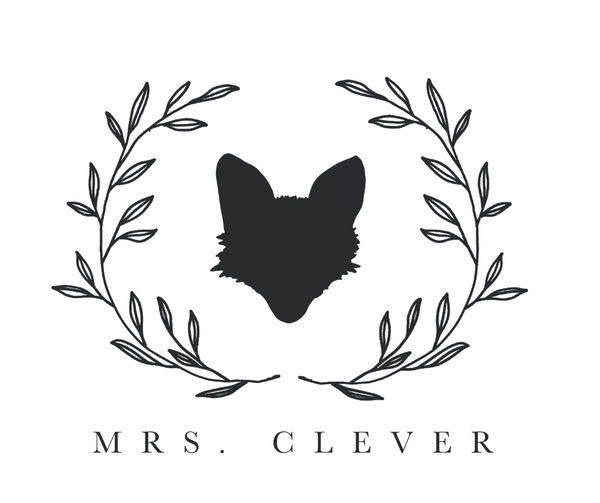
Using a Paper Planner to Quiet the Digital Din in Your Head
Share
What is Digital Din?
In our hyper-connected world, technology is woven into nearly every aspect of our lives. While it brings remarkable convenience and opportunities, it also contributes to a growing problem: cognitive noise (or din). This metaphorical "noise" is the mental clutter and constant distraction created by our technology-driven environments, and as we become more reliant on smartphones, social media, and constant connectivity, the mental impact of this noise becomes increasingly evident.
Where is all that noise coming from?
One of the primary sources of Digital Din is the sheer volume of information we are exposed to daily. Notifications, emails, social media updates, and news alerts create a continuous stream of data that demands our attention. This constant influx can overwhelm our cognitive resources, making it difficult to focus on a single task or process information deeply. Studies have shown that information overload leads to reduced productivity, increased stress, and even decision paralysis, where the abundance of options makes it harder to make choices.
Social Media messaging is constantly shouting in your head.
Social media platforms are designed to keep us engaged, often by amplifying content that aligns with our existing beliefs and preferences. The resulting Digital Din comes from the bombardment of opinions, advertisements, and curated content, which can distort our perceptions and lead to mental fatigue. Additionally, the pressure to stay updated and the fear of missing out can exacerbate stress and anxiety.
Everyone wants you to notice them.
The rise of the attention economy has led tech companies to design platforms and apps that maximize user engagement, often by exploiting psychological triggers like instant gratification and variable rewards. Notifications and alerts are engineered to draw us back to our screens, creating an environment of constant distraction. This manipulation not only interrupts our focus but also contributes to the Digital Din, which leads to our brains continually reacting to stimuli rather than engaging in deep, meaningful thought.
This is exhausting!
The cumulative effect of Digital Din can have serious implications for mental health. Constant distractions and information overload are linked to increased stress and anxiety. The relentless pressure to stay connected and the fear of missing out can lead to burnout and emotional exhaustion. Furthermore, the lack of time spent in reflective, undistracted thought can contribute to difficulties in managing emotions and maintaining a sense of well-being.
So you see the problem… but what’s the solution?
Recent research underscores the cognitive advantages of writing by hand versus typing. When you jot down notes or plans with a pen, you engage different parts of your brain compared to typing on a keyboard. This physical act of writing involves fine motor skills and spatial memory, which improves information retention and understanding.
Writing by hand also forces you to slow down and process information more deeply. Unlike typing, which can be a rapid and less reflective activity, writing requires deliberate thought and reflection. This slower pace helps solidify the information in your memory and can lead to a clearer, more organized mental structure.
Pen to paper can be healing.
Using a paper planner isn’t just about organizing tasks—it's also a therapeutic exercise. The act of writing things down can be meditative, offering a sense of calm and control. When you transfer your thoughts and tasks onto paper, you create a visual representation of your plans, which can reduce anxiety and the feeling of being overwhelmed. Writing and seeing your to-dos laid out in a planner allows you to break down large tasks into manageable steps, making them feel more achievable and less intimidating.
Additionally, the physical act of crossing off completed tasks provides a satisfying sense of accomplishment. This small but meaningful reward can boost your motivation and create positive feedback loops that energize your brain and encourage productivity.
Challenge that brain of yours!
A paper planner can also stimulate creativity in ways that digital tools often cannot. The lack of digital distractions—like pop-up notifications and app alerts—creates a focused environment conducive to brainstorming and creative thinking. Many people find that sketching, doodling, or jotting down ideas in a paper planner can spark innovative thoughts that might be interrupted by the constant flow of information on a screen.
The physicality of a paper planner also allows for more personalized and creative expression. You can use different colors, doodles, and layouts to suit your preferences, making the planning process itself a creative outlet that engages your brain in unique ways.
Recharge your brain by creating routines.
Incorporating a paper planner into your daily routine can also help build mental discipline. The consistency of regularly writing in a planner helps establish a structured routine, which enhances time management and organizational skills. This routine fosters a sense of stability and order, which can be energizing for the brain as it reduces the mental clutter and decision fatigue associated with managing tasks and appointments.
A much needed break.
One of the most immediate benefits of using a paper planner is the break it provides from screen fatigue. Prolonged exposure to screens leads to digital burnout and strain on the eyes and mind. By switching to a paper planner, you give your brain a much-needed rest from the constant barrage of digital stimuli, allowing you to recharge and refocus.
So, as the world increasingly offers you digital solutions, choosing a paper planner can be a surprisingly potent tool for mental rejuvenation. From enhancing cognitive functions and creativity to offering therapeutic benefits and reducing screen fatigue, the act of writing things down on paper can be a powerful way to energize your brain. So, if you’re feeling overwhelmed or uninspired, consider rediscovering the simple pleasure of a paper planner. Your mind—and your productivity—might just thank you for it.
Resources
https://www.npr.org/sections/health-shots/2024/05/11/1250529661/handwriting-cursive-typing-schools-learning-brain
https://www.psychiatrist.com/news/handwriting-shows-unexpected-benefits-over-typing/
https://www.forbes.com/sites/nancyolson/2016/05/15/three-ways-that-writing-with-a-pen-positively-affects-your-brain/
https://www.ncbi.nlm.nih.gov/pmc/articles/PMC9638701/
https://centralfloridabehavioral.com/blog/screen-time-effects-on-mental-health/
https://www.healthline.com/health/parenting/digital-dementia#clinical-definition

1 comment
It’s true. A pencil on paper quiets everything in my brain.